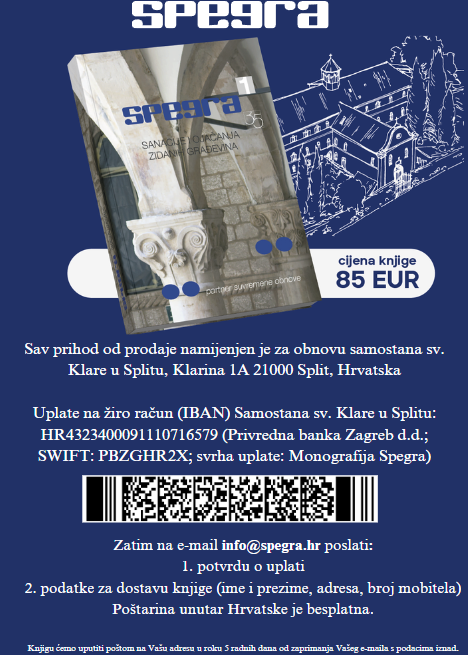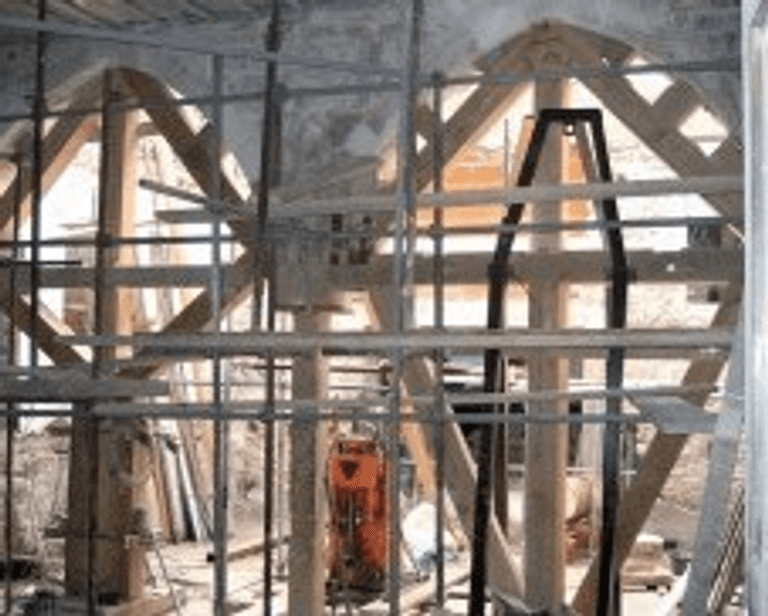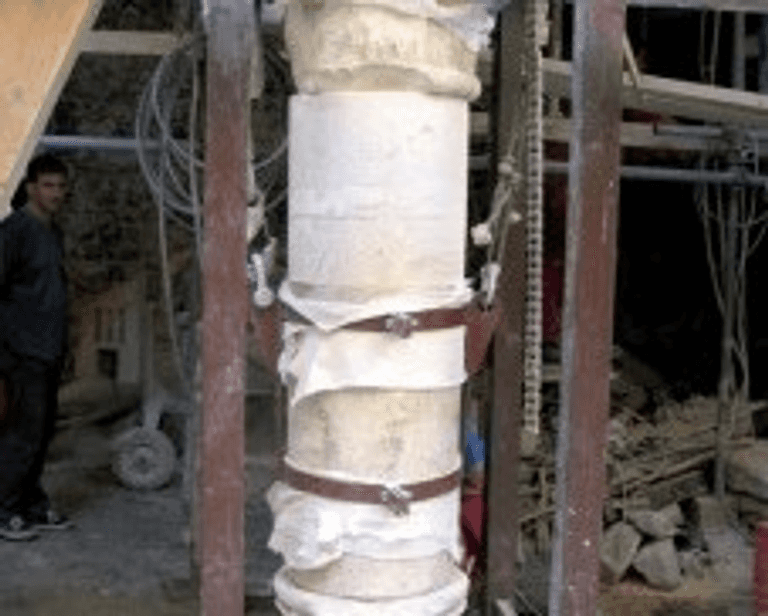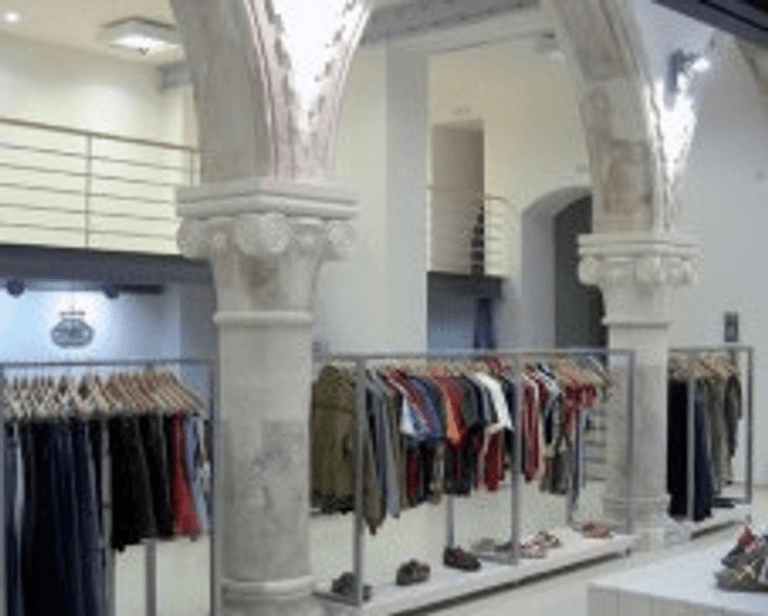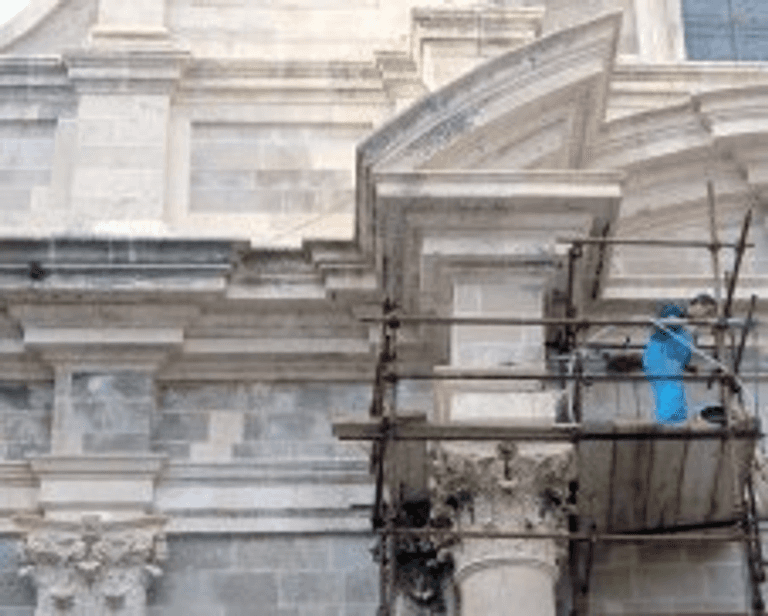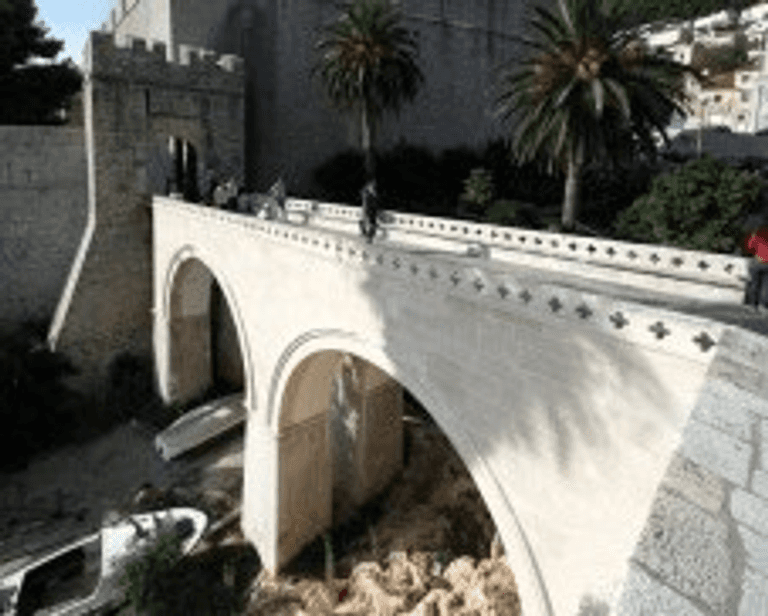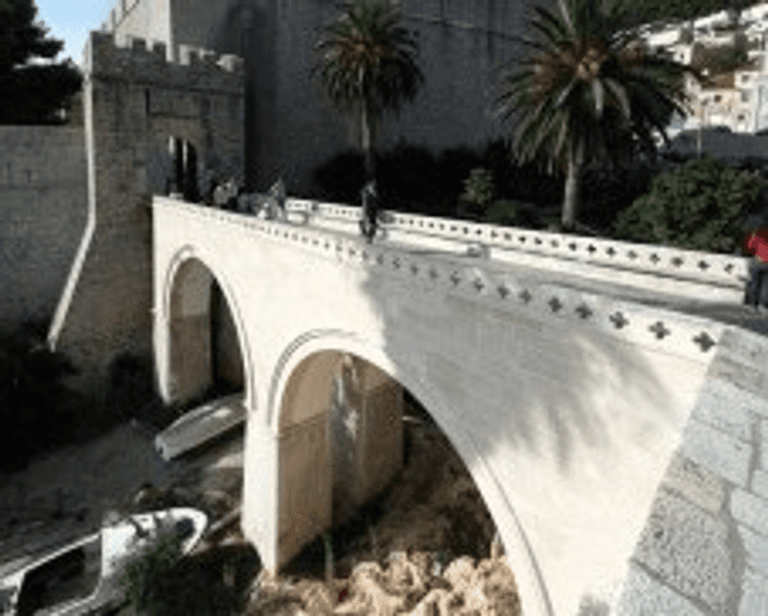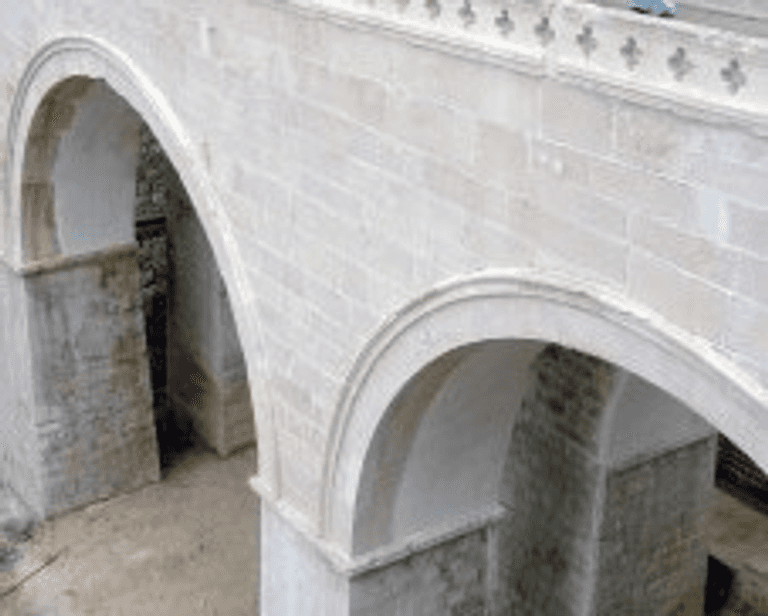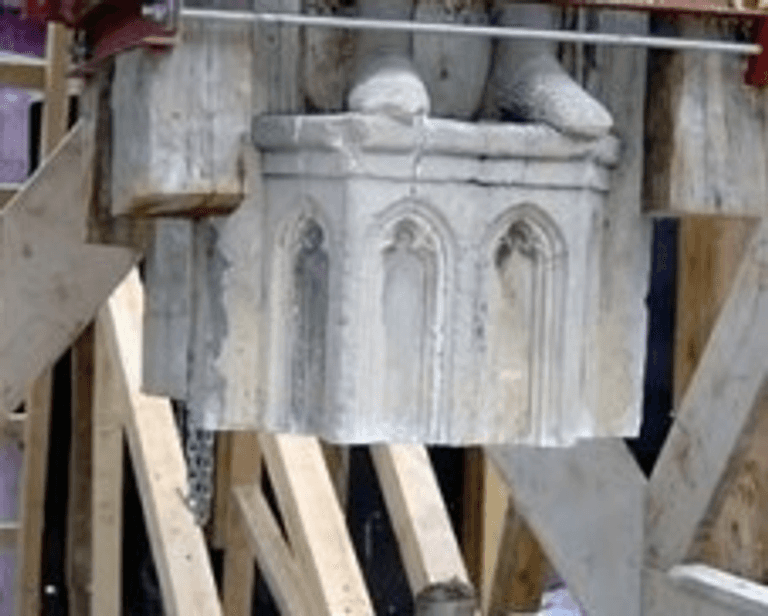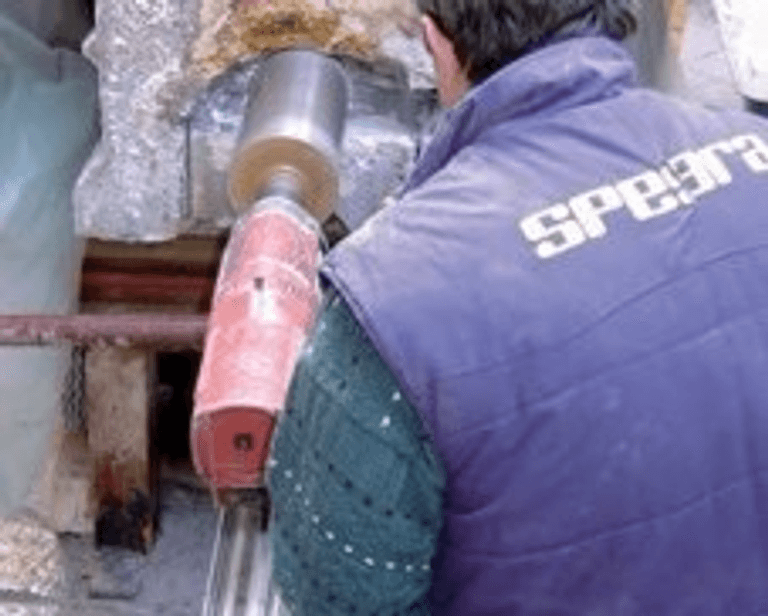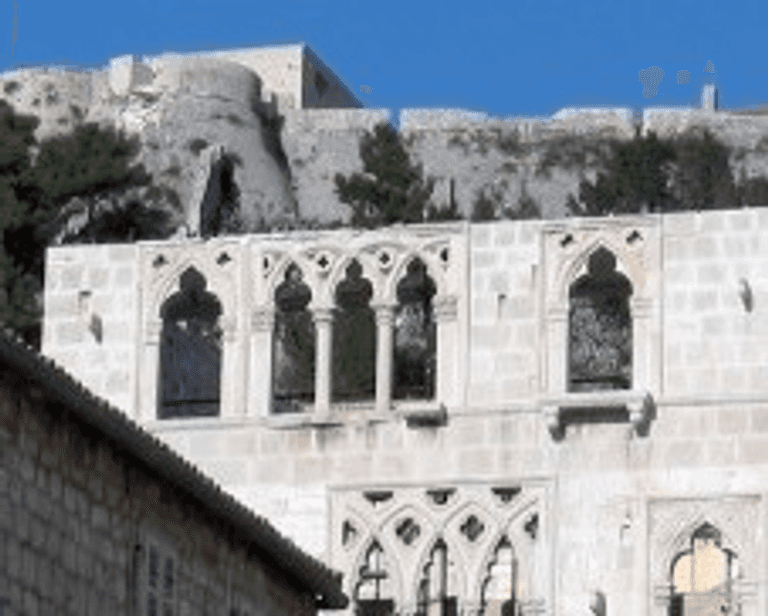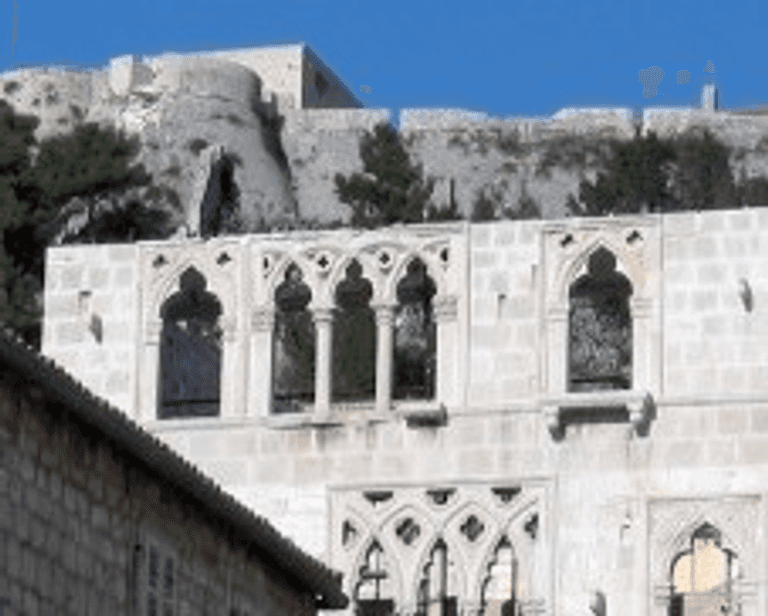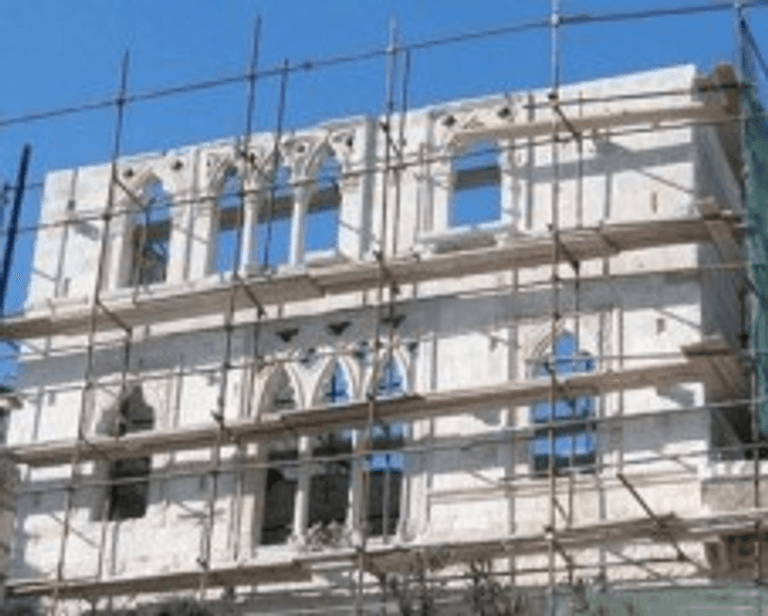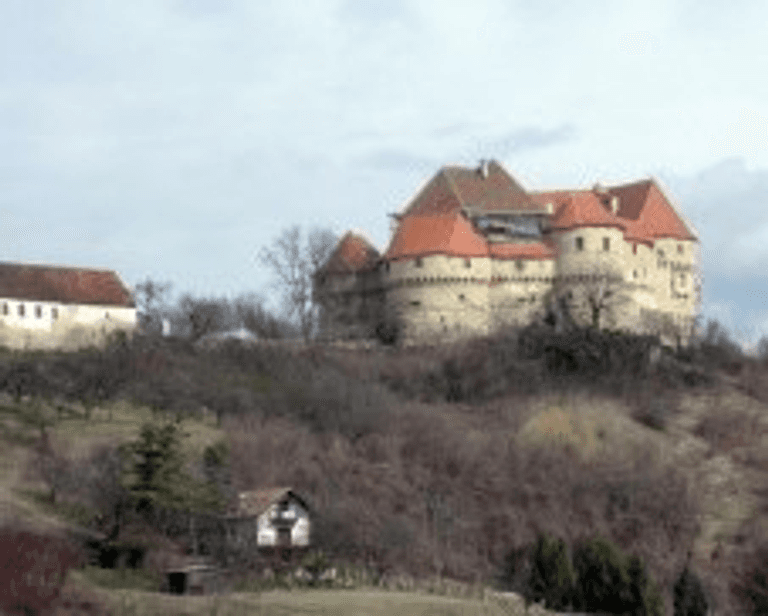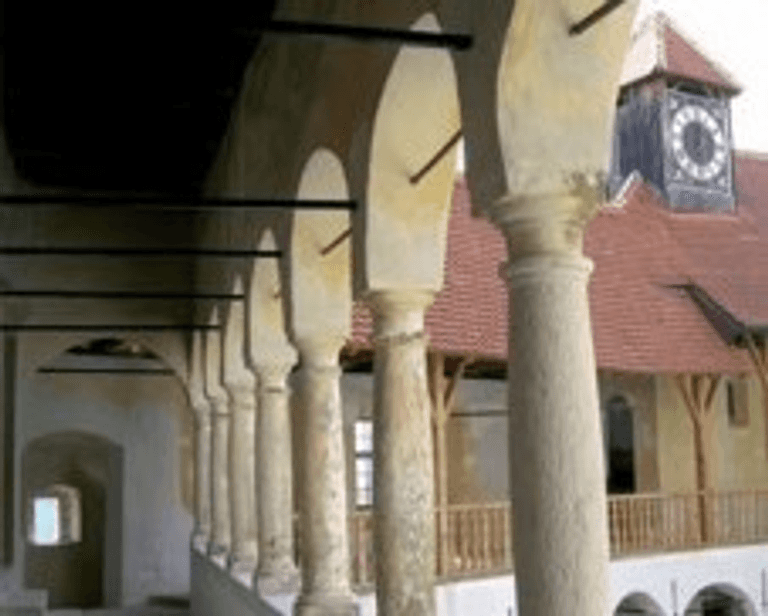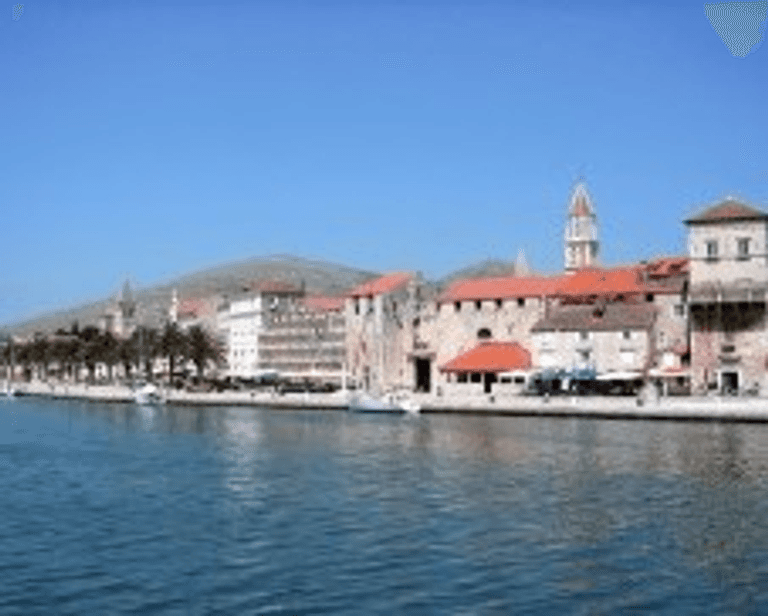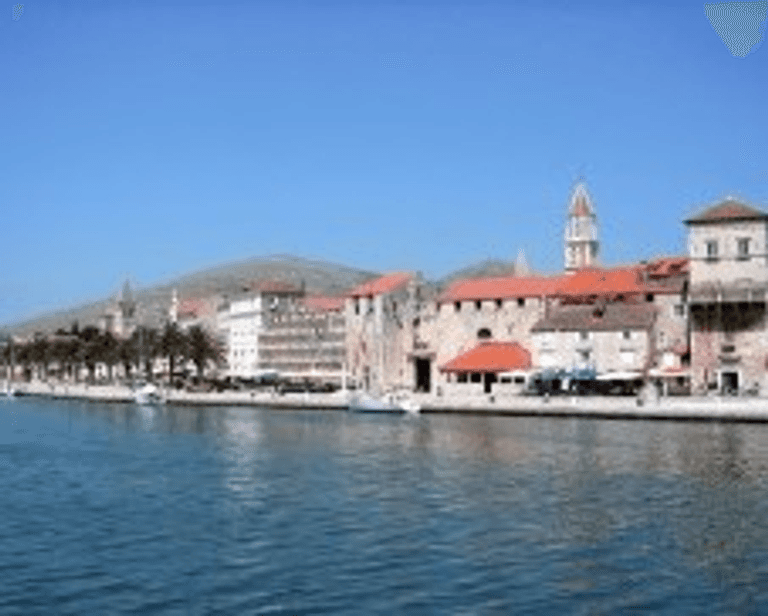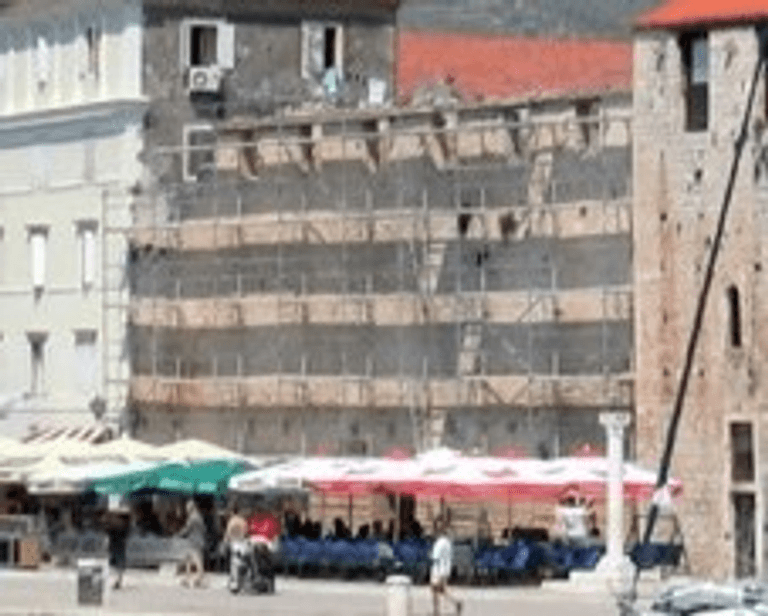Rehabilitation of cultural heritage



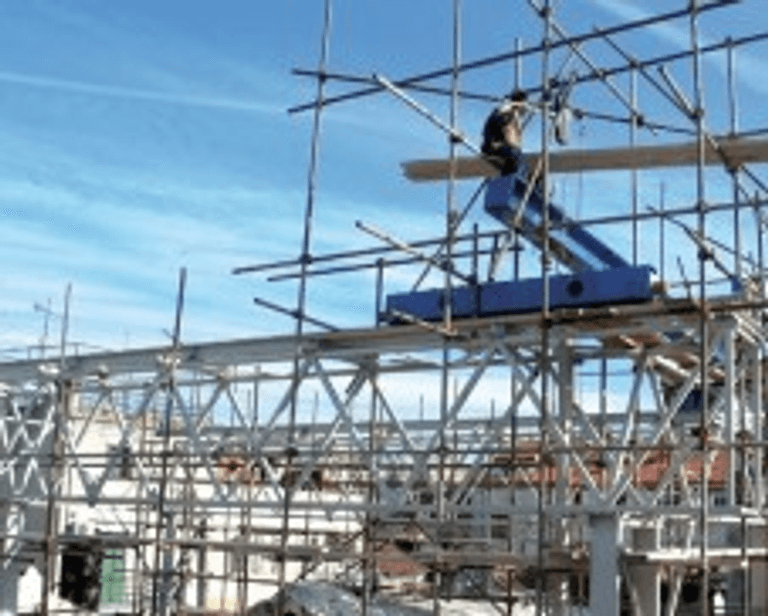
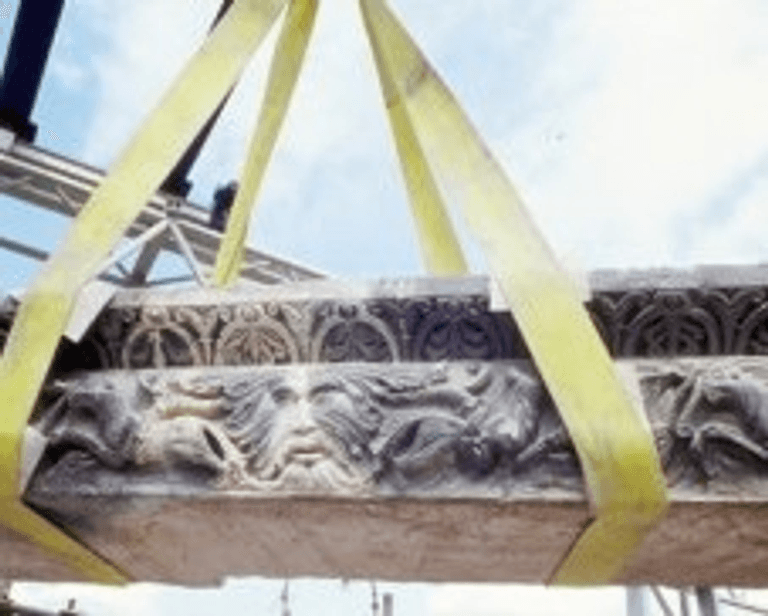
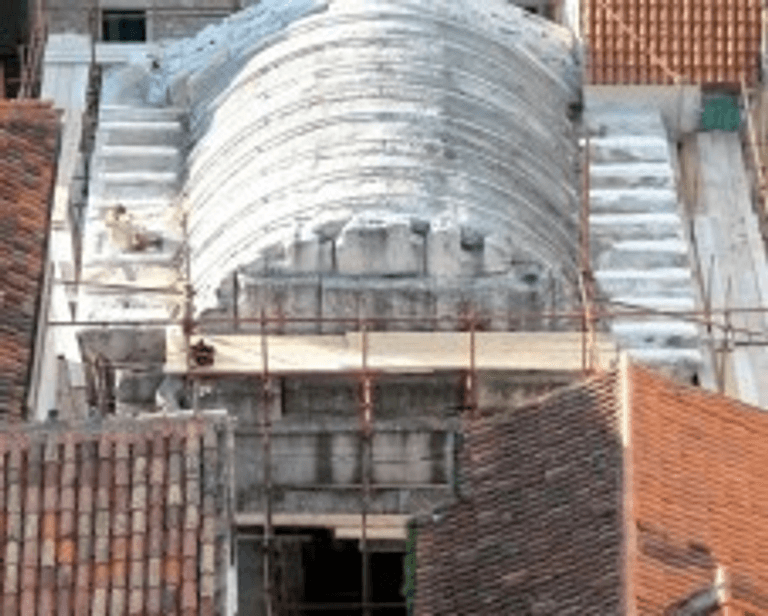
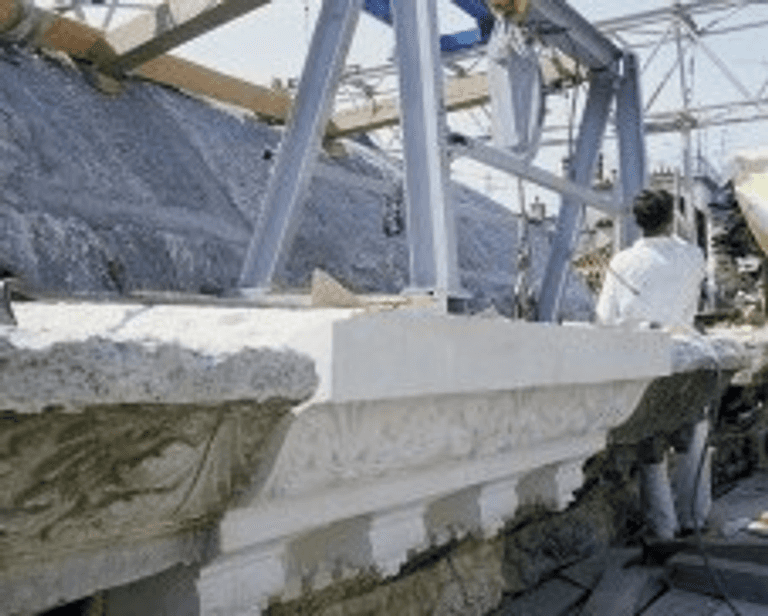
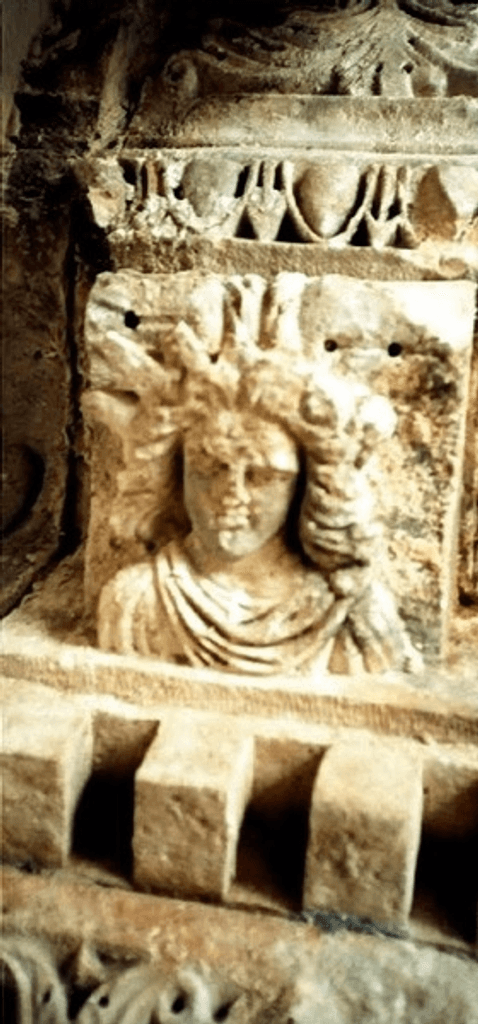

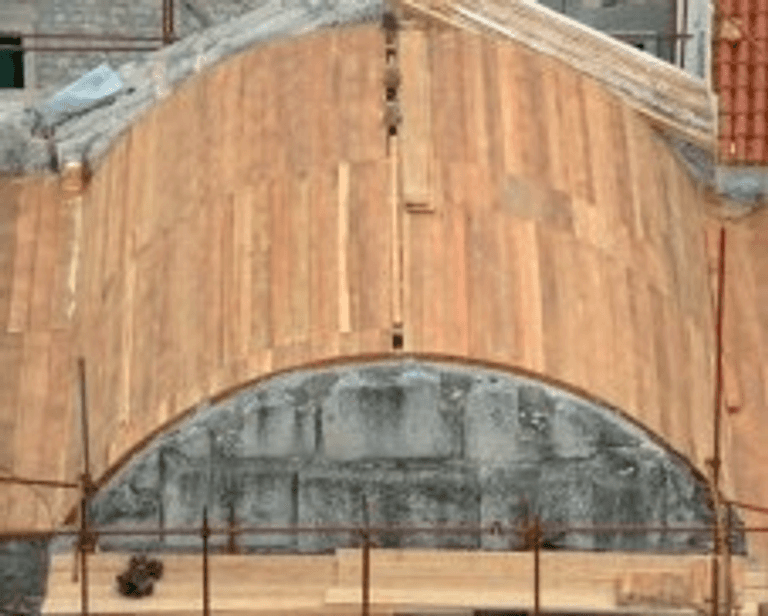


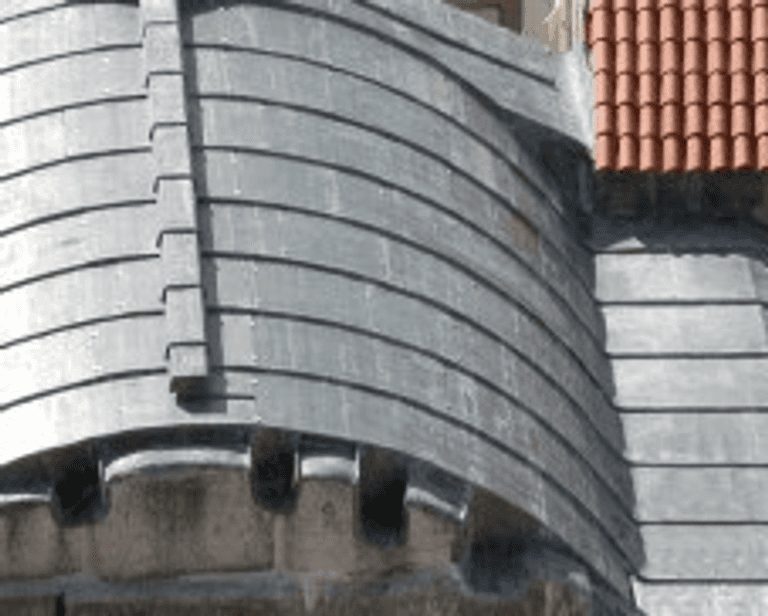
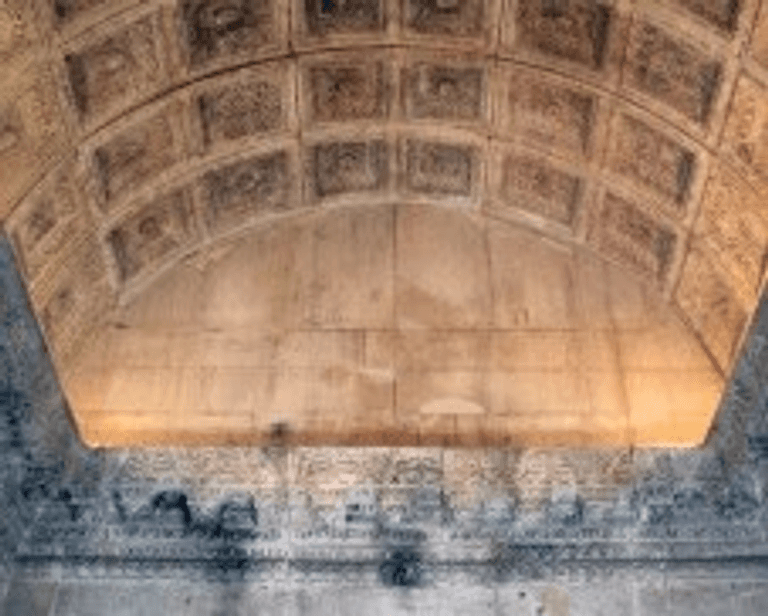
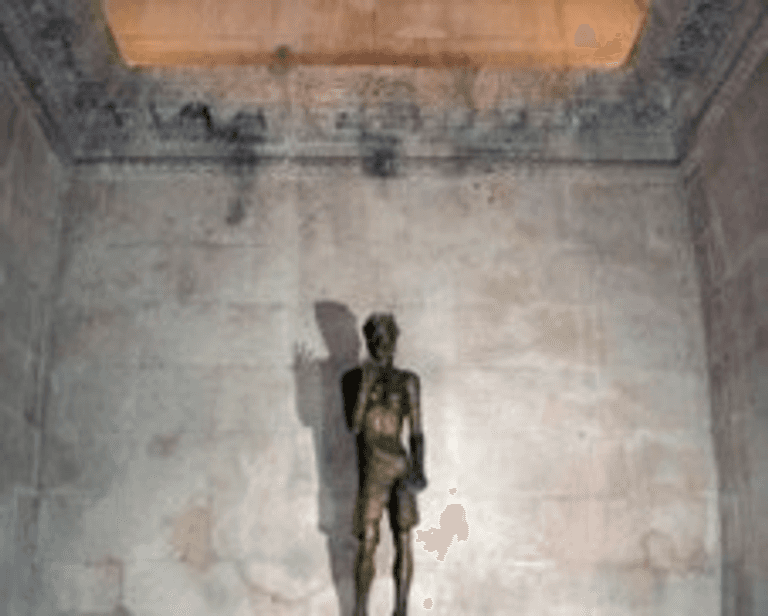
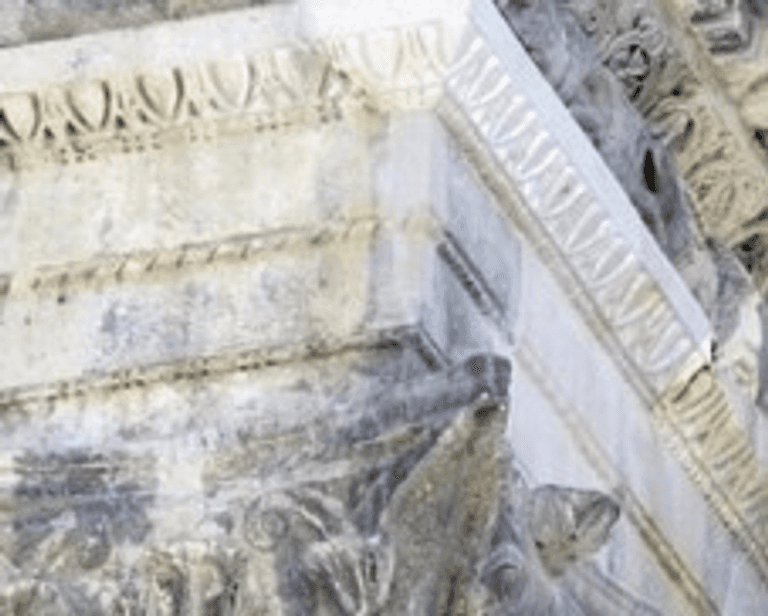
REHABILITATION OF CULTURAL HERITAGE
Rehabilitation and protection of the bearing structure of the Baptistery of St. John (Jupiter's temple) in Split
The stone bearing system of the Baptistery of St. John (Jupiter's Temple) in Split consists of four walls that, without elements of stone plastics, reach the vault foot height. From that level to the end of all walls, with the exception of the wall on the east side, stone blocks are richly decorated with elements of architectural plastics. The vault of the Baptistery was built of forty stone blocks, positioned in eight longitudinal rows, each with five blocks positioned transversally to the longitudinal axis, with rounded edges and considerable convexities on the external side, but richly moulded on the inner side.
When talking about the support system, we have to mention the cornices of longitudinal walls, those on the exterior side and those supporting the vault on the inside. The external, upper cornices are constructed with stone blocks of ground- plan transversal dimension of approximately 150 cm. The connection with metal couplings in two places vertically to the common expansion joint and the distance between the transverse walls of the Baptistery of 7.20 m gives the cornice a respectable possibility of taking over and transferring horizontal vault thrust. The cornice below the vault heels has the same possibility. Since the Baptistery has been exposed to weathering without any protection for the last thousand years, various damages have been discovered.
The damage on the upper external side of the stone blocks showed an opening of typical hinge/crack, somewhat above the joint with stone blocks of the cornice, at the connection of two stone blocks of the vault. The damage of stone blocks of the external, horizontal cornice occurred due to yield of iron couplings and cracking of stone around them. This damage was significant, not so much because of the damage of the stone, but because of interrupted continuity, formed by connecting stone blocks into one entirety capable to take over the horizontal thrust force of the vault.
Stone blocks were also damaged, due to concentration of stress on their edges, especially on the edge of the west facade. Due to the aforesaid and to potential danger of shifting of stone blocks of the western gable, along the slope and from the wall plane, rehabilitation of the existing state began.
Renovation of the bearing structure of the Baptistery of St. John included overall rehabilitation of stone blocks of western gable and renovation of their joints, grouting of stone walls, part of restoration works and protection from weathering of the entire Baptistery.
For the purpose of rehabilitation of western gable, the existing stone blocks had to be removed to the level of horizontal cornice of the south and north longitudinal wall, which had been rehabilitated previously.
The removed stone blocks were rehabilitated and prepared for new building in. The growing damages of stone plastics on end blocks were remedied by ''patching''.
Particular difficulty in rehabilitation and reconstruction works on the bearing structure of the Baptistery was the fact that the structure's location is in the centre of Diocletian's Palace. Huge and heavy stone blocks and their handling on site in limited space required extraordinary skills in site organization. For performing such exceptionally difficult and responsible work, special portal crane, of capacity 15 t, was constructed and erected for that occasion, without which execution of these works would be impossible.
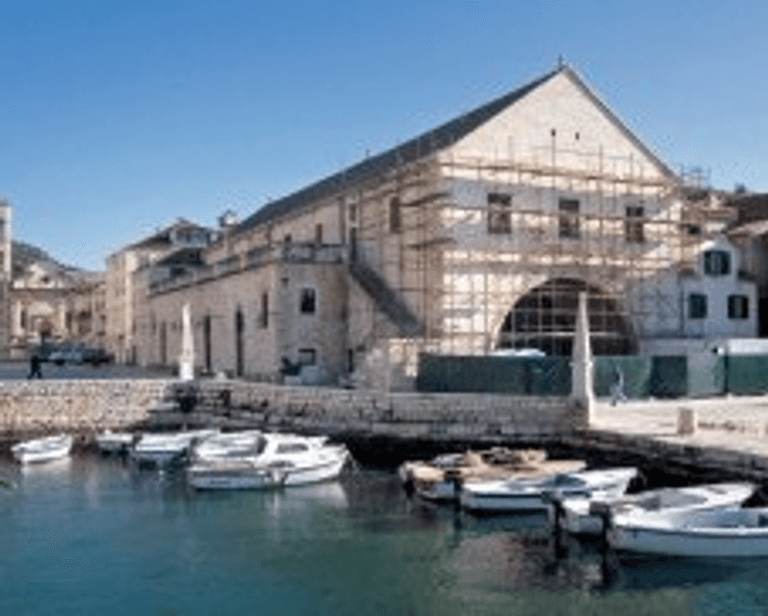
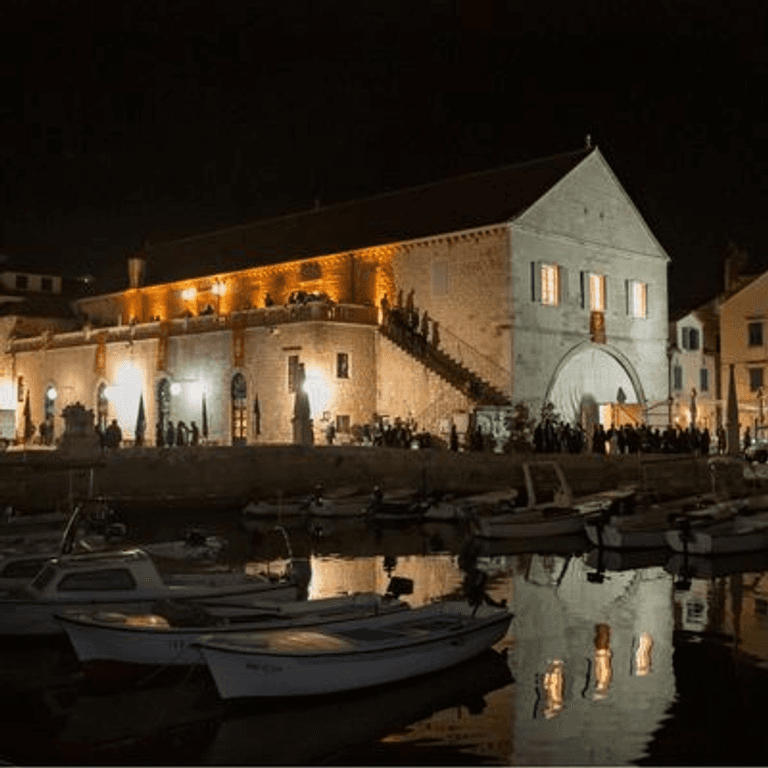

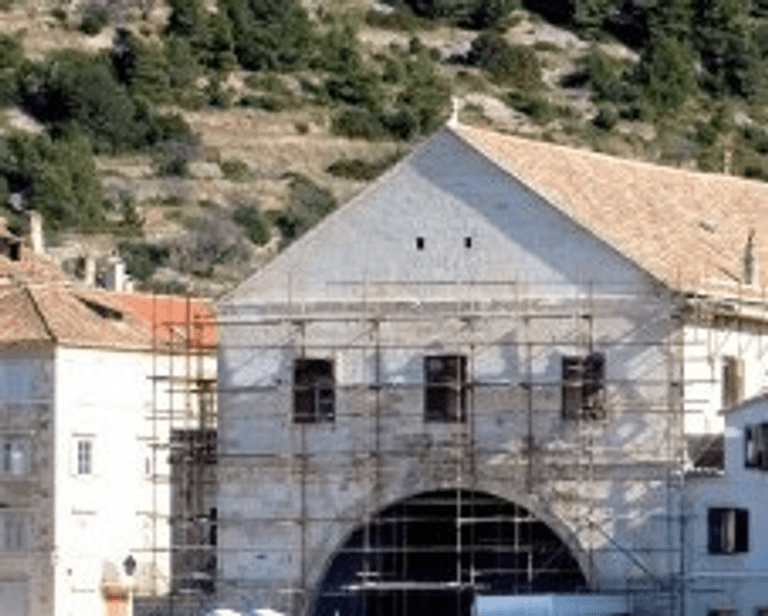
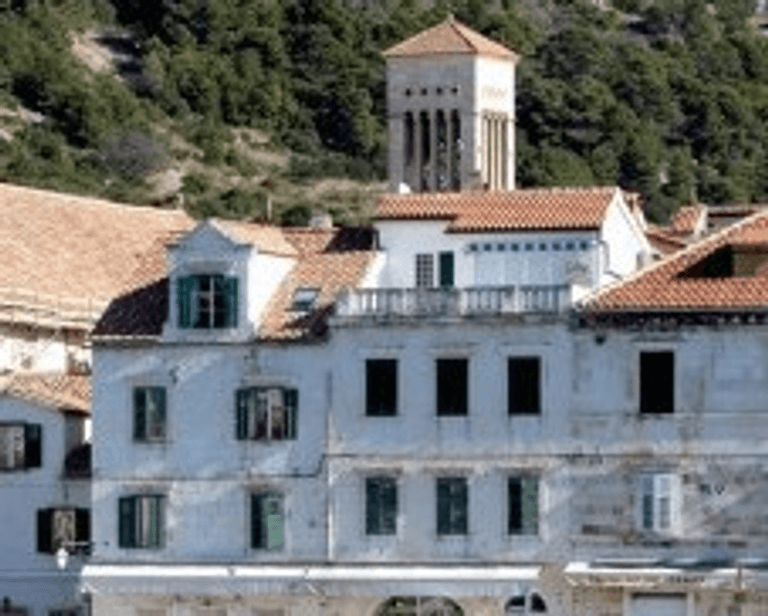
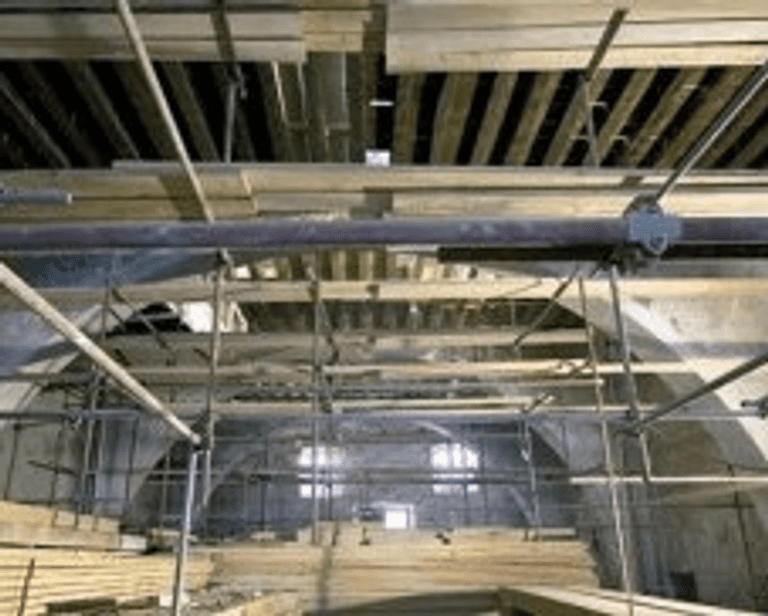
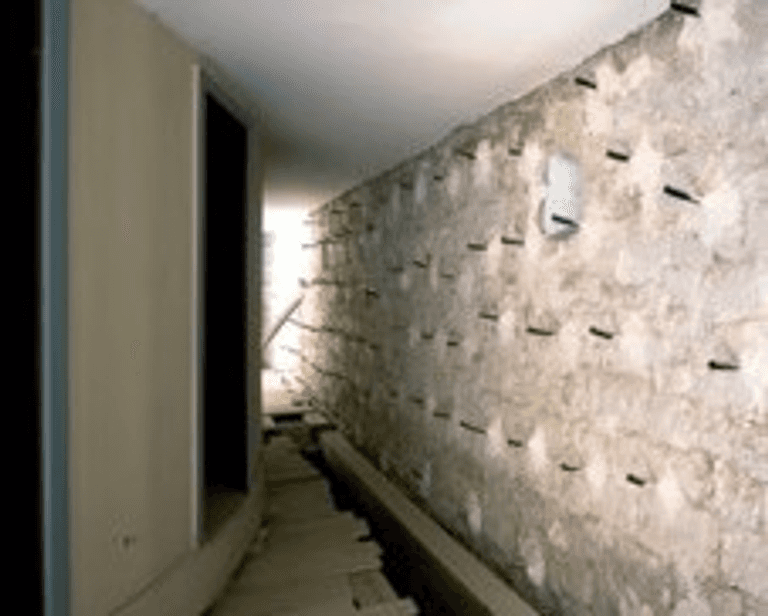
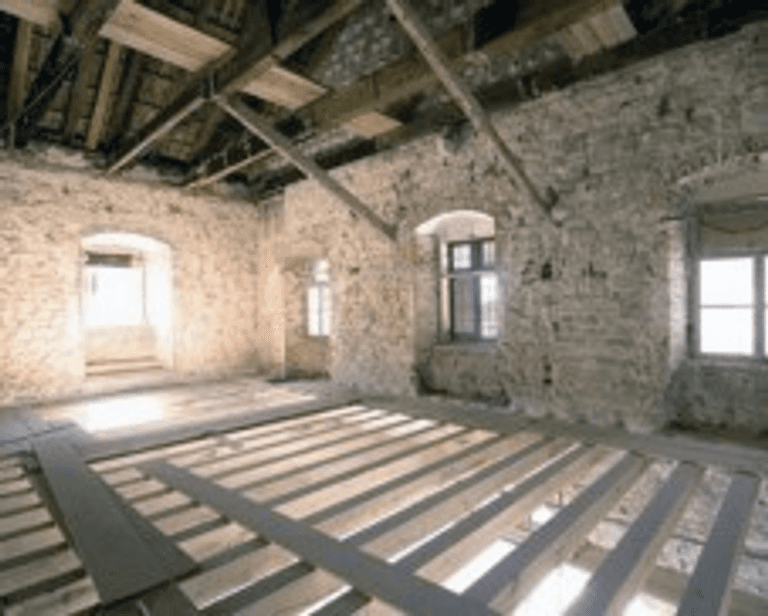

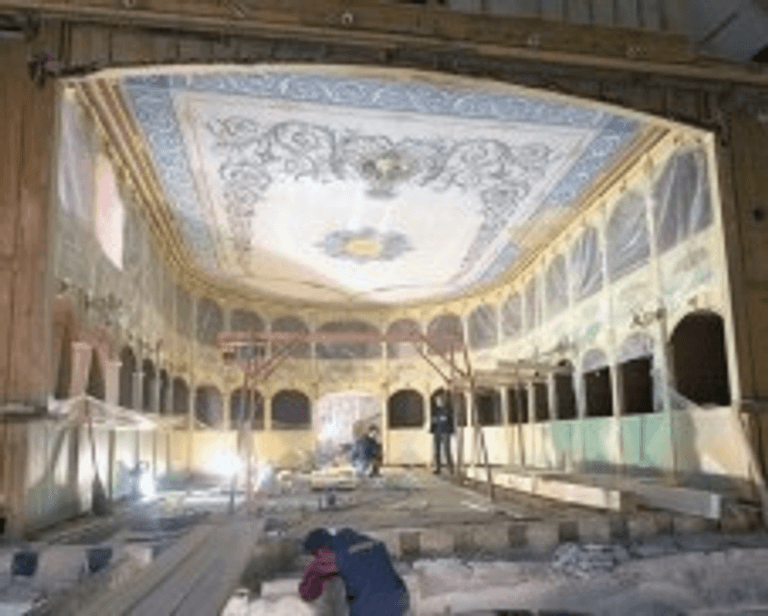

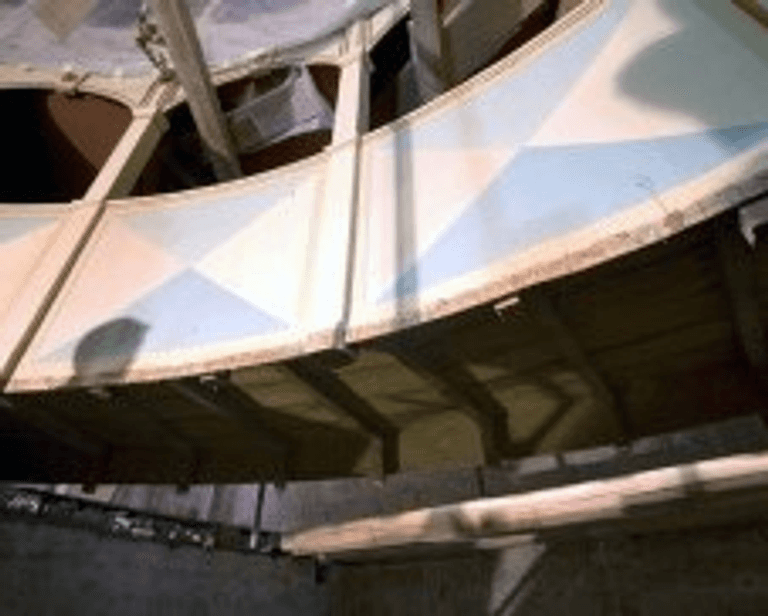
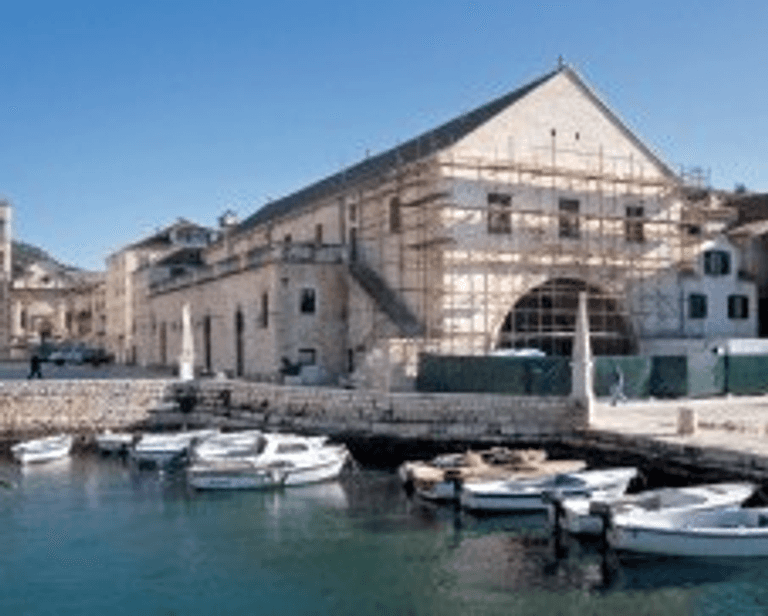
REHABILITATION OF CULTURAL HERITAGE
Arsenal in Hvar
The construction of Arsenal in Hvar started in the13th century. At first it was a ground-floor structure which served as shed for boat and its equipment. In the course of time it was subject to many changes regarding space usage, but also regarding the size of the structure. The most important issue for the present state is its surroundings, i.e. annexes built on its base volume, on the north, south, and part of the east side. On the north side, in the direction of the Square, the place where low-rises were located earlier was converted for Fontik, with terrace through which entrance to the theatre on the first floor was gained. Along the whole south facade, at the north-eastern corner and on part of the east side, one-storey and two- storey residential buildings were built, adjacent to the Arsenal. Thus, the town block was formed as a separate unit in architectural-structural sense.
Alterations on the Arsenal building were significant regarding volume, as well as interaction of parts of the bearing structure. The most significant is the change resulting from construction of the first floor, when transverse stone arches were built about 5,0 m apart, within the ground floor, between longitudinal walls. Parallel to the longitudinal walls and supported by stone arches, wooden beams were placed about 50 cm apart, as floor beams of the first floor.
The auditorium of the theatre, occupying the eastern half of the first floor of the Arsenal, is partly located in the parquet circle, partly in lodges built on two levels, in parterre and on the first floor. The entire bearing structure of the lodges was constructed of wood posts supported by floor beams, and boards dividing the lodges. The floor of the lodges on the first floor was constructed as a grid of wooden beams, leaning on longitudinal walls of the building, posts between the lodges and queen post trusses that carry the edge of the access gallery to the first floor lodges.
The bearing structure of the stage is a wooden structure, placed about 1,0 m above the parquet circle of the auditorium, leaning on the east wall of the building and the first adjacent stone arch.
The roof is wooden, constructed as purlin roof, with or without collar beams. The western part of the roof had queen post truss with braces that supported the rafters. In later interventions this bearing system of the roof was changed by removing the braces and queen post trusses. The eastern part was constructed as purlin roof, with or without collar beams, but without queen-post trusses. On the part above the stage two double queen-post trusses were constructed, one by the eastern wall and the other above the stage portal, carrying purlins and rafters.
The bearing structure of the attic floor consists of wooden beams placed on every other pair of rafters. Due to this, beams on the walls transfer horizontal force from the pair of rafters without connecting beam to the pair with connecting beam, by bending in horizontal plane. The particularity of the ceiling beams in the attic floor above the theatre lies in the fact that they don't directly lean on longitudinal walls, but below them (at the distance from end walls of the first floor lodges) short beams are placed, leaning on the walls and fixed to the ceiling beams with steel fastenings and screws.
The dimensions of ceiling beams above the theatre are not uniform, but are generally of insufficient cross section, so their sinking is easily observed. The floor level is not the same in the eastern half of the attic floor, the one above the theatre. The part above the auditorium is elevated and the remaining part is lower. The reason for this probably lies in positioning of the bottom beams that lean on the walls, so the ceiling beams had to be placed above them, which resulted in different level of the attic floor.

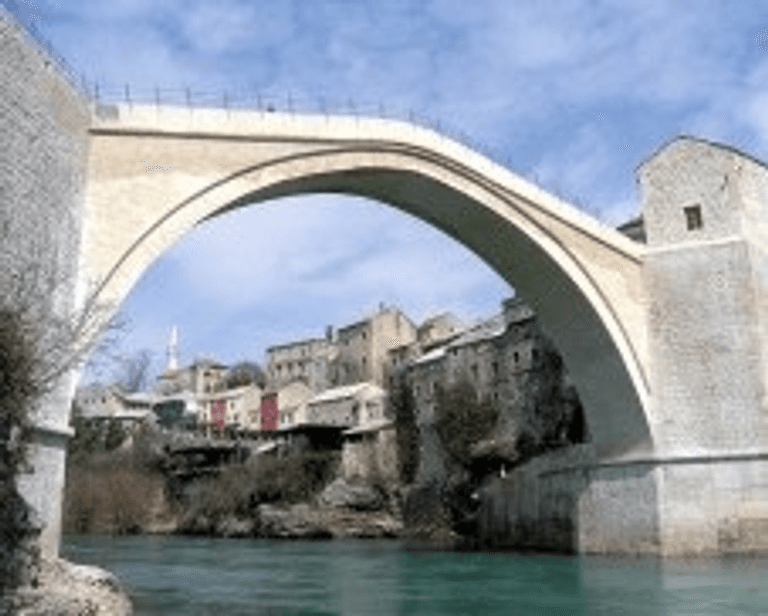


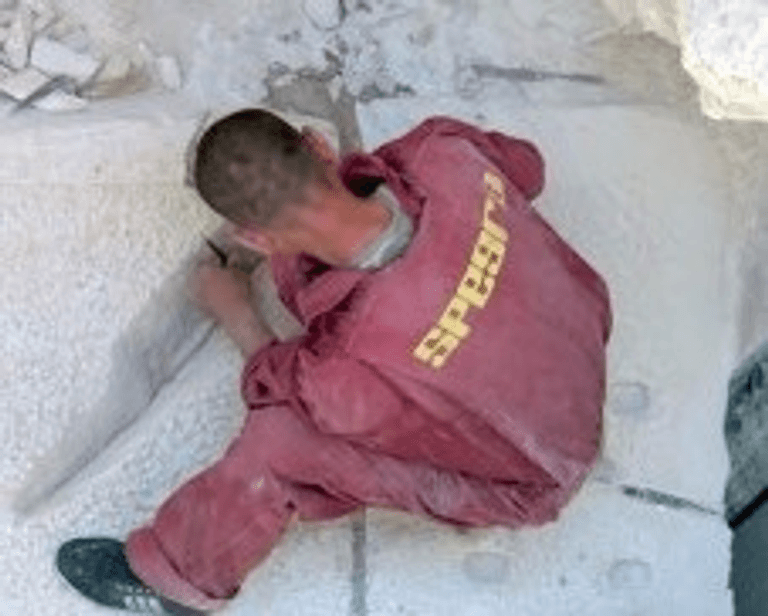
REHABILITATION OF CULTURAL HERITAGE
Reconstruction of the bridge "Stari most" in Mostar
The scope of works on the bridge Stari Most in Mostar foresaw consolidation and reinforcement of the existing abutment structures of Stari Most, by drilling of grout holes of Ø 56 mm, in grid of one hole/m2, of depth exceeding 5,0 m’, and grouting with grout compounds. Such design solution, which foresees boreholes of large diameter on the stone surface of the existing abutment structures (left and right bank of the Neretva River), was considered a destructive and unsuitable approach to reinforcement. Therefore, we proposed to the Investor a more appropriate solution to grouting works – by drilling through joints (fugues) of a larger number of holes, about 4 – 5 / m2, of smaller profile and various depths, depending on the thickness of the grouted stone wall.
Our opinion about changing the grouting method of abutment structures, beside the objectively more efficient and quality grouting method, was supported by the fact that during archaeological investigation the embankment of abutment structures was excavated (about 1200,00 m3 of rock fill was excavated), after which it could be seen that the abutment structures consist of:
- dominant abutment block
- inner abutment walls of various thickness
- external abutment – wing walls lined with ashlars.
We elaborated our proposal at a special work meeting in Sarajevo, held on Feb. 19th 2003, in the presence of the Investor, Supervisory Team and Special Expert Committee of UNESCO, where our proposal was accepted, providing we prepared a test field, which was done.
